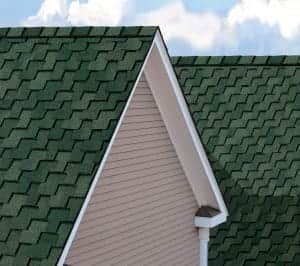Roof Colors & Materials: How they Affect The Temperature of Your Virginia Home
Choosing the right roofing material for your home can be a challenge. There are just so many products on the market. While the look of the material and the cost are important aspects when deciding on a new roof, there is one aspect you should keep in mind that you may not have considered. That’s how the color and materials you put on your roof affect the temperature inside your home.
How roof colors affect your home’s temperature in Virginia
Some colors reflect heat; others absorb the heat. Below are a few common roofing colors that can make a big difference in your heating and/or cooling bills.
1. Black and dark-colored roofs. In general, dark-colored roofing materials will absorb the heat and cause your attic and/or the top of your house to be warmer than a lighter colored material. However, the type of material used can cause this to vary tremendously (see below.)
2. Light-colored roofs. Conversely, light-colored roofing materials have been the traditional choice for warm weather climates, such as the American southwest. That’s why you see white, painted roofs in Greece, North Africa, and other Mediterranean countries. However, this fact, too, can vary quite a bit depending on the materials used.
The relationship between different roofing materials and home temperature
The key factor in how the type of roof you install in a house located in Virginia will affect the temperature inside your home is the material you use. According to the U.S. Department of Energy, the temperature in your attic in the height of the summer can vary by up to 50 degrees based on what material you choose for your roof. Below are a few popular roofing materials and how they affect your home’s temperature.
1. Traditional asphalt shingles. Asphalt shingles, the most popular roofing material used in the United States, have relatively low reflective properties, whatever color shingles you use. This is because the asphalt granules diffuse the light in multiple directions. It’s estimated that only about 30 percent of the light hitting asphalt roofs is reflected away from the house on even the lightest colored roofs; the rest is absorbed, despite the color. This means that heat is transferred from your roof to the inside of your attic, helping to warm your home in the winter and causing your air conditioner to work harder during the summer months.
2. Metal. Metal and steel are used for shipping containers, jewelry, roofs, and more. Unlike asphalt roofs, metal roofs have high reflective properties. Even metal roofs that are painted a dark color reflect the majority of the sun’s rays, keeping your attic a more even temperature, both in summer and winter.
3. Solar reflective shingles. One of the newest roofing products on the market is solar reflective shingles. This type of roofing product is designed so that a greater amount of the sun’s rays are reflected back into the atmosphere than happens with traditional asphalt shingles. These types of shingles are coated with specially-designed reflective granules to make them more energy-efficient.
4. Rubber flat roof materials. Another newer roof product is rubber and polymer flat roof materials that have changed this type of roof from a homeowner’s nightmare to a secure and watertight barrier. Such materials form a watertight membrane across the flat roof and are available in light or darker colors. This material has high reflective properties and color choice can greatly affect the heat transfer to the top of your home.
For more information about choosing the right roofing materials for your Richmond, Hampton Roads, or Virginia home, contact Paramount Builders at 1 (888) 340-9002. We are the go to roofing company in Virginia.















